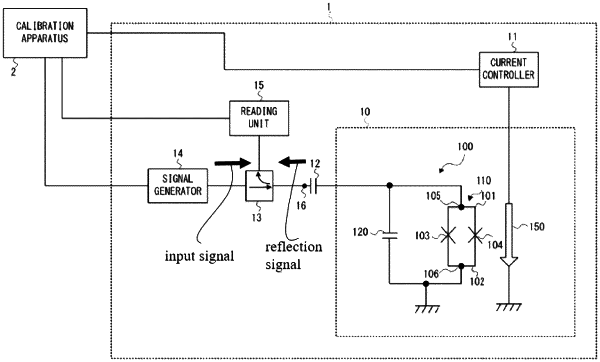| CPC G01R 31/31702 (2013.01) [G06N 10/20 (2022.01); G06N 10/40 (2022.01); H03J 3/12 (2013.01); H10N 60/00 (2023.02)] | 8 Claims |

|
1. A calibration method comprising:
outputting, from a signal generator, an input signal to be input to an oscillator to be calibrated, the oscillator comprising a resonator, wherein the resonator is a superconducting circuit that performs parametric oscillation, the input signal comprising a first AC signal and a second AC signal, wherein the first AC signal is a first microwave voltage signal and the second AC signal is a second microwave voltage signal, wherein the outputting comprises:
1) changing a power of the second AC signal, or
ii) changing a frequency of the first AC signal,
wherein the first AC signal is a probe signal for measuring the intensity of the reflection signal of the resonator and the second AC signal is a signal for exciting the resonator from a ground state to an excited state,
wherein the signal generator is coupled to the oscillator through a transmission path, and the transmission path includes a capacitor;
acquiring distribution data of an intensity of a reflection signal based on measurement of the intensity of the reflection signal from the oscillator in response to the input signal; and
estimating a degree of signal loss by comparing the distribution data acquired by the measurement with the distribution data theoretically obtained in which a value of the degree of the signal loss of the transmission path is assumed, the degree of signal loss corresponding to magnitude of power loss of the second AC signal input to the oscillator,
wherein the distribution data acquired by the measurement indicates a distribution of the intensity of the reflection signal based on the frequency of the first AC signal or based on the power of the second AC signal, and
wherein the distribution data theoretically obtained is based on an average number of photons accumulated in the resonator.
|